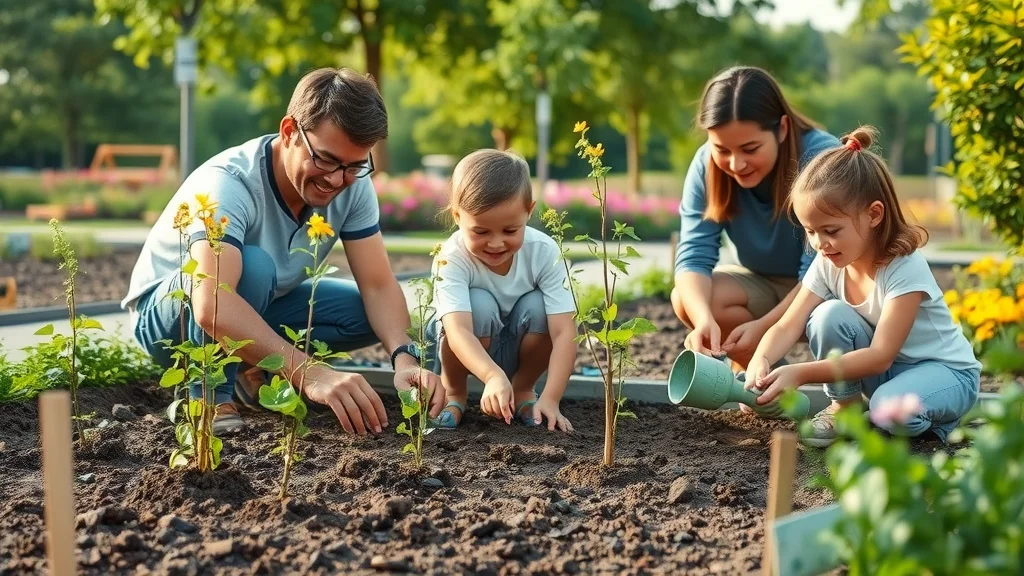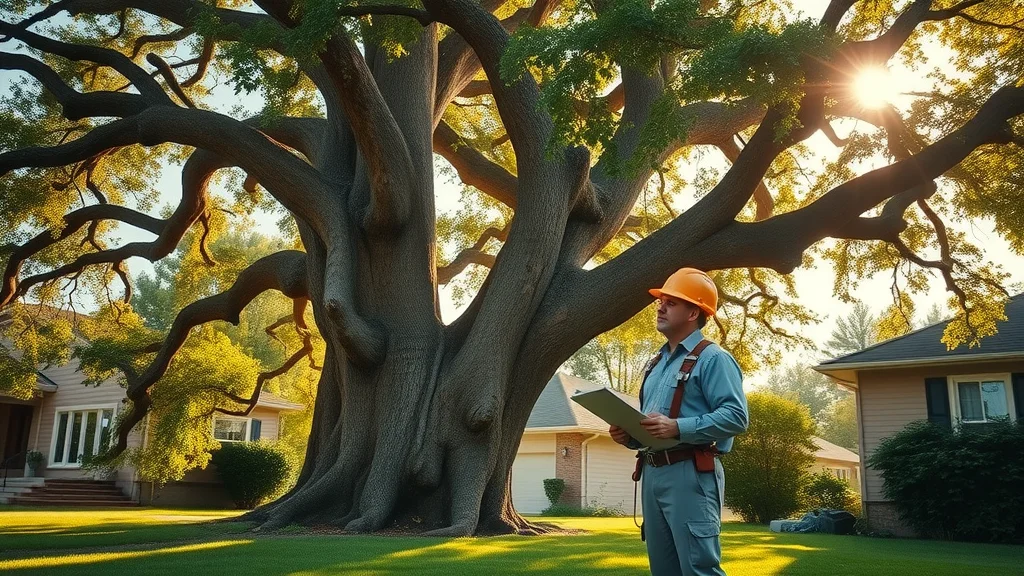Did you know? A staggering 80% of urban trees lose vitality because of improper tree care. If you’re a homeowner who values the beauty, safety, and health of your landscape, understanding tree care isn’t just a luxury—it’s essential. This comprehensive guide delivers expert-backed, actionable advice to help you ensure your trees stay healthy and thriving all year long.
A Surprising Look at Tree Care: Why Proper Maintenance Matters
Tree care is much more than just watering or occasionally trimming branches. For homeowners, proper tree care safeguards against hazards, supports property value, and enriches local ecosystems. The importance of routine maintenance has never been higher—urban development, changing climates, and restricted growing spaces increase stress on trees. Neglecting tree health can result in damaged trees, disease outbreaks, and costly tree removal. Addressing basic care principles early ensures trees remain strong contributors to the beauty and function of your property.
Urban environments pose unique challenges: compacted soils, lack of biodiversity, and limited root expansion due to pavement and construction. This is why the modern tree care industry, including certified arborists, recommends proactive steps like soil testing, routine inspections, and following seasonal care guidelines. By integrating these practices, you set yourself up to prevent the common pitfalls leading to declining tree health—a benefit for you, your community, and the broader urban forest.
The Startling Reality: 80% of Urban Trees Lose Vitality Due to Poor Tree Care
Most people are shocked to learn just how drastically a lack of proper tree care can impact the life of their trees. Recent studies estimate that four out of five urban trees experience significant stress or decline primarily due to neglectful maintenance. Inadequate watering, poor soil conditions, incorrect pruning, and lack of inspections often result in unhealthy trees susceptible to pests and severe weather. Simply put, what you do (or don’t do) today makes a critical difference in the plant health and longevity of your trees tomorrow.

What You'll Learn About Tree Care
Key principles of effective tree care
Essential tree care practices for all seasons
When to consult a tree care service or professional
Top tips for keeping trees healthy and thriving
The critical role of tree health in landscape aesthetics and safety
By the end of this guide, you'll not only recognize the early warning signs of unhealthy trees but also know exactly how to nurture your landscape to peak condition. You'll discover practical strategies used by the tree care industry, see how urban forestry principles can transform your yard, and learn when it's time to call in the experts for tree service or tree removal. Let's dig into the foundation of good tree care and transform your plant health know-how from basic to expert level.
Understanding Tree Care: The Foundation of Plant Health
Why Tree Care Is Crucial for Every Homeowner
Trees are more than landscape decoration—they play pivotal roles in shade provision, property value, air purification, and even stormwater management. Yet, these benefits hinge on your commitment to proper tree care. Neglect can result in damaged trees that become hazardous, hosting pests or risking property with falling limbs. Seasonal stresses, pest infestations, soil compaction, and improper mulching may go unnoticed until the damage is severe, underlining the relevance of pre-emptive and knowledgeable care.
When you invest in appropriate tree care strategies—soil testing, consistent watering (ensuring soil moisture), observation for disease—you maximize plant health and tree longevity. Studies supported by cooperative extension services prove that informed care leads to more robust root systems, improved resistance to local pests, and more vibrant, longer-living trees. Ultimately, the care you provide not only supports your property but also enhances your community’s urban forest for years to come.
Key Aspects of Tree Health: Recognizing Healthy vs. Stressed Trees
Signs of a Healthy Tree Versus Common Tree Health Issues
Before you embark on a new care routine, it’s important to recognize the difference between a thriving tree and one in distress. Healthy trees typically feature upward, balanced growth with full crowns, lush foliage, and branches free of cracks or decay. In contrast, a damaged tree may display wilted or yellowed leaves, bare patches, visible wounds, or stunted new growth. Recognizing these cues is an essential element of effective tree care and informs exactly which interventions—watering, pest control, or pruning—are necessary.
Due to environmental factors like poor soil moist conditions, improper mulching, or even incorrect autumn planting, even a normally robust tree can show signs of stress. Understanding these markers helps homeowners act quickly, contacting a tree service for professional assessment if needed. Remember, early detection and intervention extend tree longevity and minimize the likelihood of expensive tree removal.
Comparison of Healthy vs. Stressed Tree Characteristics |
||
Characteristic |
Healthy Tree |
Stressed (Unhealthy) Tree |
|---|---|---|
Leaf Color & Texture |
Vivid green, glossy, full |
Yellowing, browning, wilted, patchy |
Branch Condition |
Strong, flexible, uncracked |
Brittle, dead, or broken branches |
Growth Pattern |
Upright, balanced, regular new growth |
Stunted, lopsided, thin crown |
Bark Appearance |
Even color, intact, no visible fungus |
Peeling, splitting, fungus, cankers |
Pest & Disease Signs |
Few or none, resilient to minor pests |
Visible pests, bores, oozing, leaf spots, or galls |

Best Tree Care Practices for Homeowners
Soil testing and preparation for optimal root system growth
Proper tree planting techniques using the 10-20-30 rule
Efficient watering routines during various seasons
Regular inspection for pests and diseases
Successful tree care starts underground: ensure soil supports healthy root system development through periodic testing and amendment. Plant new trees following guidelines like the 10-20-30 rule (detailed below) to nurture a diverse and resilient landscape. Water deeply but less frequently, maintaining proper soil moisture while avoiding waterlogged roots—essential for both established and newly planted trees. Lastly, scan foliage and bark for early signs of pests or disease, and never underestimate the role of timely intervention or expert tree service.
Mulch around your tree with organic materials—such as wood chips or shredded bark—but keep mulch a few inches away from the trunk to avoid rot and pest issues. Remember, proper mulching maintains soil temperature and balances soil moisture year-round. At every stage, consistent care reduces the risk of tree removal due to neglect and secures a lush landscape for decades.
While these best practices form the foundation of healthy tree maintenance, it's equally important to understand when a tree may pose a risk to your property. For a deeper look at how to identify and assess potential hazards, explore this guide on understanding tree risk assessments for homeowners and gain practical skills for keeping your landscape safe.
The 10-20-30 Rule in Tree Planting and Urban Tree Care
Applying the 10-20-30 Rule: How It Supports Urban Forest Health
The 10-20-30 rule in tree planting is a staple of urban forestry, designed to improve the diversity, resilience, and overall tree health of communities. It advises that no more than 10% of your trees should be of the same species, no more than 20% from the same genus, and no more than 30% from the same family. This strategy ensures your urban forest isn’t wiped out by a single pest or disease outbreak and increases overall resistance to changing climate or local stresses.
For homeowners and landscapers, this means planning plantings with variety in mind. Diversity supports root system health, reduces soil nutrient depletion, and bolsters the ecological benefits trees provide—like cleaner air and habitats for wildlife. When proper tree care and planting diversity are combined, community landscapes and newly planted trees withstand the tests of nature and time.

Pruning Trees: 5 Essential Rules for Long-Term Tree Care
Prune at the right time of year
Remove dead or diseased branches first
Follow the natural shape of the tree
Use clean, sharp tools for every cut
Avoid excessive pruning to maintain tree health
Pruning is both an art and a science. Begin by scheduling most pruning outside of the active growing (spring) or leaf-shedding (early fall) seasons—late winter or early spring are generally best. Always remove dead, damaged, or diseased limbs first, as these can host pests or pathogens. Shape the tree by following its natural growth habit to maintain a balanced and healthy tree appearance and structure.
Sharp, sanitized equipment minimizes plant stress, and good technique prevents accidental bark stripping or stub formation. Most importantly, avoid over-pruning, especially with newly planted trees—vigorous cutting can inhibit plant health and open the door to pests or disease. When in doubt, consult a certified arborist or tree service before making substantial cuts.
Expert Insights: Tree Care Industry Best Practices
"Tree care is both an art and a science—proper timing and proactive management lead to healthier, safer trees." — ISA Certified Arborist
Leaders in the tree care industry stress that an informed, proactive approach is always best for maintaining tree health. Certified arborists highlight the value of regular inspections, appropriate pruning, and attention to soil moist conditions. Selecting the right species for your property or urban forest—and working with professionals for assessments or hazardous tree removal—underlines a commitment to both safety and ecological health.
The future of tree care is collaborative: homeowners, community organizations, and the care industry all play a role. Whether you’re pursuing a career path in urban forestry or simply want the best for your own yard, following industry best practices makes an immediate, visible impact on the vitality of your landscape.
Tree Service and Tree Removal: When Professional Help Is Needed
Identifying Signs That Your Tree Needs Professional Tree Care or Removal
Sometimes, the best tree care involves calling in the pros. Symptoms like sudden trunk splits, brittle or dropping branches, visible fungi, or a tree leaning toward a utility line mean you should reach out to a tree service. Damaged trees from storms or disease may pose risks to your home or neighborhood. Additionally, unexplained dieback, oozing sap, or evidence of persistent pests suggest you need a professional diagnosis and likely, treatment or full tree removal.
Hiring an experienced team ensures safety for you and your property. Look for companies with certified arborists, ask about insurance and previous experience, and request detailed estimates before any work begins. Professional tree service not only handles dangerous removals but can also help with soil remediation, pest management, or advanced pruning—preserving your urban forest for generations.
Safeguarding Your Urban Forest: Tree Care for Urban Environments

Urban Forestry: Preserving Tree Health in Challenging Conditions
The urban forest faces tough challenges: road salt, pollution, compacted soils, heat islands, and competing infrastructure. Sustaining tree health in towns and cities requires thoughtful species selection, vigilant pest monitoring, and innovative soil management strategies. Community-wide efforts—relying on the tree care industry and volunteer support—provide both practical maintenance and stewardship.
Homeowners can make a major difference by incorporating native species in landscaping, practicing regular watering (especially for newly planted trees), and reducing compaction by minimizing foot traffic near root zones. When supported by a strong knowledge of the root system and careful seasonal adjustment, these measures stabilize trees and help create a vibrant, resilient urban forest.
Understanding Your Tree’s Root System for Long-Term Tree Care
Root System Management to Maximize Plant Health and Stability
The heart of every healthy tree lies underground. Roots not only anchor the plant but also absorb nutrients and water crucial for thriving foliage. Effective tree care means recognizing threats like soil compaction, overwatering, or construction damage, all of which undermine stability and slow plant growth. Using mulch around your tree—like wood chips—protects surface roots and keeps soil moisture stable.
Homeowners should avoid piling soil or mulch against the trunk, which can encourage rot. Instead, apply a two- to four-inch mulch layer extending outward from the trunk. Water trees deeply but less frequently, promoting a naturally extensive root system. For older trees or those near construction, professional advice helps guide root system support and intervention. Remember, robust roots are essential to the lasting success of your proper tree care efforts.

Seasonal Tree Care Checklist
Spring: Inspect for winter damage and fertilize
Summer: Mulch and monitor moisture levels
Fall: Prune and prepare for dormancy
Winter: Protect from freeze and check for hazards
Each season brings new challenges and vital opportunities for tree care. In spring, check for frost cracks and prune as leaves begin to emerge. Summer means watering wisely—keep an eye on soil moist levels and replenish mulch as needed. In the fall, inspect for pests, prune as necessary, and fertilize before dormancy. Winter is the time to wrap trunks (if needed), clear away heavy snow, and check for storm damage. Timely care ensures your trees emerge stronger with each new season.
People Also Ask: Tree Care Frequently Answered
How do you maintain a tree?
Step-by-step guide: Maintenance actions for effective tree care
Maintaining a tree starts with regular observation and addressing its basic needs. Begin by checking the soil moist and adding water only when necessary—overwatering can be as damaging as drought. Apply mulch (such as wood chips) around your tree, but don’t let mulch touch the trunk. Prune away dead or diseased branches at the correct times using clean, sharp tools, always preserving the tree's natural shape. Inspect for pests or signs of disease at least twice a year, and fertilize if your soil lacks nutrients. For mature trees or larger concerns, bring in a tree care service or certified arborist to keep your landscape healthy and safe.
How do I keep my trees healthy?
Health-focused tree care strategies for long-lasting trees
Keeping trees healthy centers on three core priorities: nourishment, protection, and observation. Test your soil to determine pH and nutrient levels, and amend as needed. Water regularly, always checking soil moisture at root level. Use proper mulching—2-4 inches deep, keeping it several inches away from the trunk—to shield roots from temperature swings and drought. Prune thoughtfully to remove hazards and improve airflow. Monitor for pests or fungi, and call in a tree care service for emergencies. Consistent, low-stress maintenance encourages deep roots, full crowns, and vibrant year-round plant health.
What is the 10 20 30 rule for tree planting?
Explaining the 10-20-30 rule’s impact on tree care and urban forestry
The 10-20-30 rule is a straightforward tree care principle: Limit any one species to 10%, any genus to 20%, and any family to 30% of your landscape or neighborhood’s total tree population. This diversity reduces the risk of mass loss from disease or pests and is a foundational guideline in urban forestry and community tree planting projects. Whether you’re adding one tree or managing a larger property, following this rule supports stronger root system development and increases the resilience of your urban forest.
What are the 5 rules of pruning trees?
Breakdown of the main pruning rules as they relate to tree care
The core pruning rules for proper tree care are: (1) Prune during the dormant season for health and safety; (2) Make removals with the tree’s structure and natural growth in mind; (3) Always cut back to a lateral branch or bud, avoiding stubs; (4) Remove larger limbs in stages to prevent bark tearing; (5) Clean your cutting tools between trees to avoid spreading diseases. Proper pruning shapes growth, prevents weak branch unions, and minimizes the likelihood of future decay—critical factors for keeping every planted tree healthy long-term.
Key Takeaways for Every Homeowner on Tree Care
Consistent, informed tree care ensures tree longevity
Professional guidance enhances tree health and safety
Small actions can have a major landscape impact
Frequently Asked Questions (FAQs) About Tree Care
How often should I water my trees?
For most planted trees, water deeply once a week during the growing season. Always check soil moisture first and increase frequency during droughts or for newly planted trees.What signs indicate a tree is diseased?
Look for wilting leaves, cankers, visible fungi, sap oozing, or sudden limb loss. If symptoms appear, contact a tree care service or certified arborist for an evaluation.Is mulching necessary for tree care?
Yes. Proper mulching (using 2-4 inches of wood chips or similar) conserves water, reduces weed competition, and protects roots. Mulch should be applied several inches from the trunk.
Summary and Next Steps for Outstanding Tree Care
Grow your landscaping expertise—call 203-271-7991 or visit TreeGuardianNews.com to subscribe.
As you continue to refine your approach to tree care, consider how your efforts fit into the broader landscape of environmental stewardship and community well-being. Delving into the importance of collaboration in environmental research can reveal how collective action and shared knowledge drive healthier urban forests and more resilient ecosystems. For a deeper perspective on how your individual tree care practices contribute to larger environmental goals, discover the value of partnership and innovation in collaborative environmental research. Expanding your understanding in this way not only benefits your own property but also empowers you to make a lasting impact in your neighborhood and beyond.
To further enhance your understanding of tree care, consider exploring the following resources:
The article “7 Common Tree Care Mistakes That Kill Trees & How To Avoid Them For Long-Lasting Plants” outlines frequent errors homeowners make, such as improper pruning and over-mulching, and provides guidance on how to avoid them.
The piece “I’ve been making this big mistake when mulching my trees - experts warn its ‘an epidemic in landscaping’” discusses the common issue of “mulch volcanoes” and offers expert advice on proper mulching techniques to promote tree health.
By delving into these resources, you’ll gain valuable insights into effective tree care practices and common pitfalls to avoid, ensuring your trees remain healthy and vibrant.
 Add Row
Add Row  Add
Add 




Write A Comment